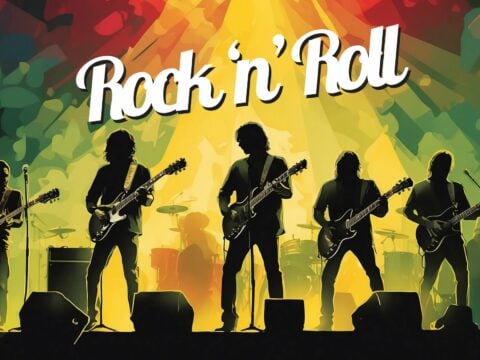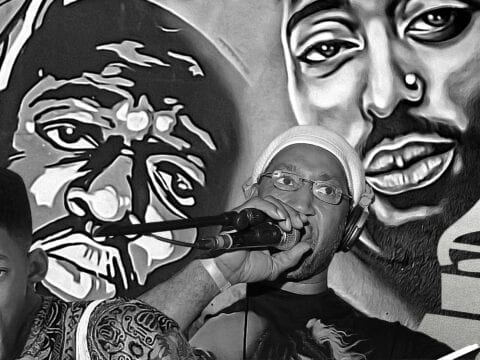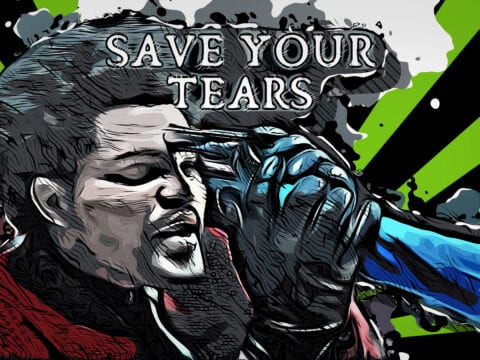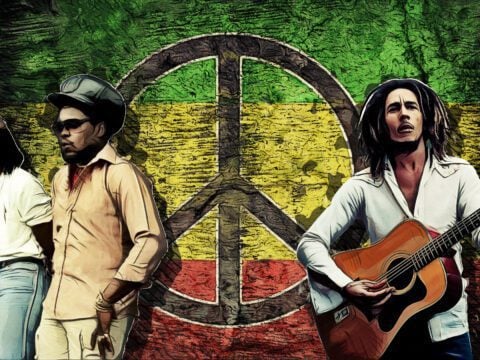Rock and roll has captivated the hearts of music lovers for decades, embodying a spirit of rebellion and freedom that transcends time. In this exploration, we delve into the history of rock and roll, tracing its roots from the rhythm and blues of the 1940s to its meteoric rise in the 1950s.
As we journey through the transformative eras of this genre, we’ll uncover how rock and roll became the soundtrack to cultural revolutions and the voice of youth around the world.
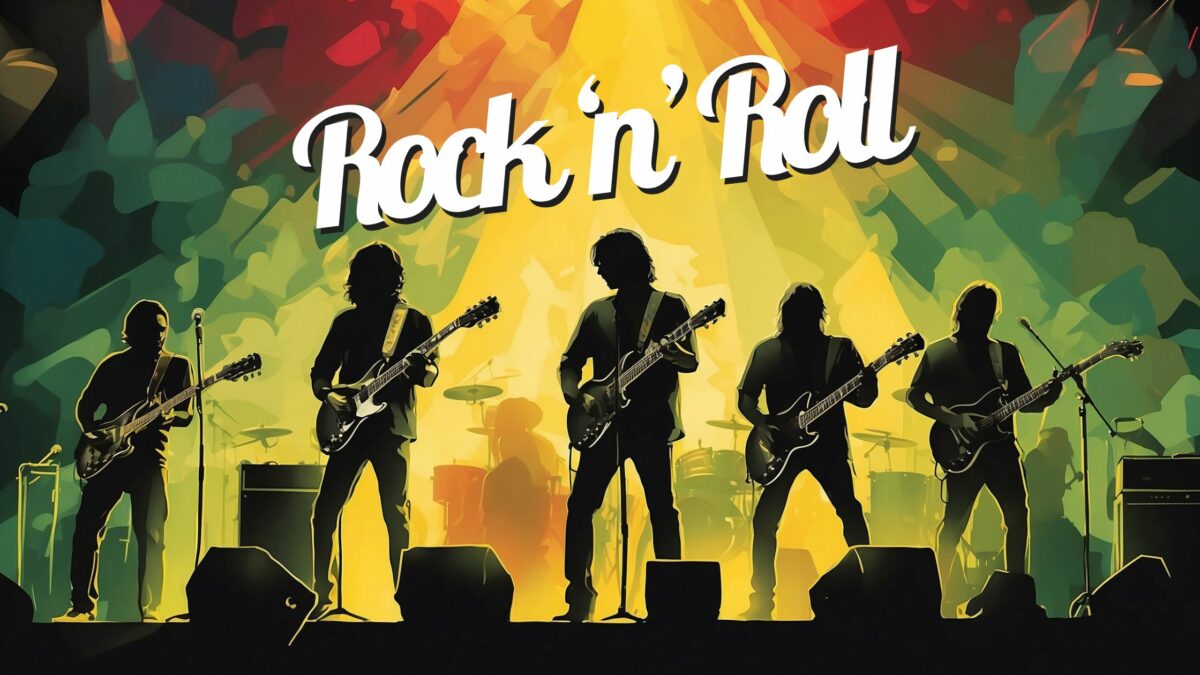
Join us as we rewind through the annals of music history to understand how rock and roll was shaped and shaped by generations of change-makers.
Table of Contents
Rock and roll emerged from blues, country, and other popular music genres of the early 20th century and capitalized on new advances in technology in recording, distribution, and broadcasting of music to become a popular music genre of unprecedented success. Musicians like Chuck Berry and Elvis Presley crossed racial barriers and societal taboos to become international superstars and inspire generations of rock musicians.
However, the origins and early history of rock and roll go far beyond hit records. How rock and roll music developed from other forms of music, what the first rock and roll record was, and why it became so popular are key questions that helped sustain the popularity of the genre for the next several decades. The beginnings of rock and roll in the 1950s reflect a cultural shift that soon led to the immense social and political change that occurred globally in the 1960s and later decades.
Key Takeaways
- Rock and roll music became a cultural force in the US due to changes in American culture, technology, and the growth of independent record labels.
- Rock and roll developed from various music styles and traditions, influenced by blues, country, and African-American musicians.
- The British Invasion, led by bands like the Beatles and the Rolling Stones, brought rock and roll music back to prominence globally and influenced the sound of rock and roll.
- The 1970s saw the further splintering of rock and roll into subgenres such as hard rock, punk rock, and disco, while the 1980s witnessed popularizing through large media like MTV.
How Did Rock and Roll Begin?
Rock and roll was not just a new style of music; it was also a norm-breaking cultural force. The birth of rock and roll music was also made possible by significant changes in American culture. Rock and roll music emerged in the United States at the same time as the growth in teenage youth culture shortly after World War II during a period of economic prosperity. As teenagers became a defined demographic with their own spending power and leisure time, record labels and radio stations were able to market rock and roll music to them with great success. Also, the increased interaction between black audiences and white audiences, as well as performers, helped boost the popularity of the music that inspired rock and roll.
Other factors in the creation of rock and roll came about from technological advances in amplification (particularly the growing popularity of the electric guitar), innovations in recording equipment, and new forms of music distribution, including the introduction of the 7-inch vinyl record in 1949. These advances helped the rise of independent record labels like Atlantic Records and Sun Records, which would become significant companies in the history of rock and roll music. The growth of the television market also helped bring rock and roll music to national prominence and allowed rock and roll musicians to revel in showmanship in both local and national broadcasts.
Who Invented Rock and Roll?
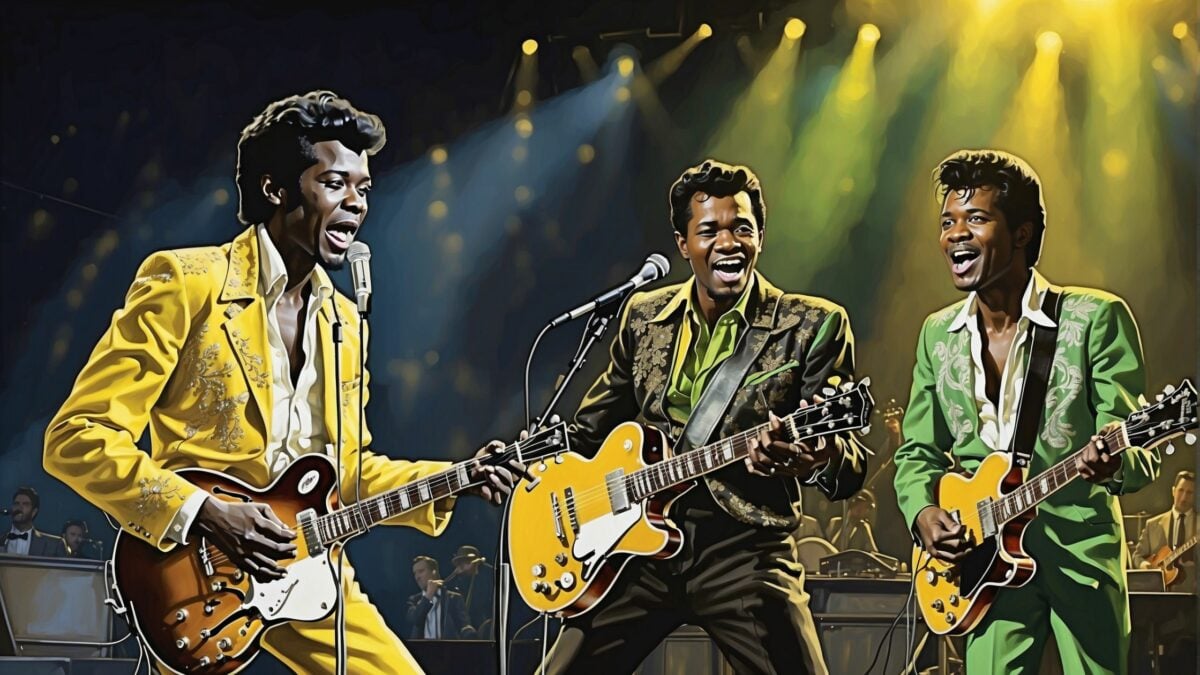
There is no single answer to who invented rock and roll because the genre evolved from several popular music genres, including blues and country, over the first half of the 20th century. Much like the melting pot of American culture and tradition, rock and roll evolved from many sources.
In particular, different variations of the blues had the most significant influence on the development of rock and roll music. While many generally think of the blues as a slow form of music, up-tempo styles like jump blues and boogie-woogie performed by African-American musicians were key influences on the style and tone of rock and roll music. The onstage bravado and powerful performances of blues shouters like Big Joe Turner also helped develop the “rock star” persona.
Musicians who were significant early influences on rock and roll include:
Bob Wills (1905 – 1975). Known as the “King of Western swing,” fiddle player Bob Willis and his band, the Texas Playboys, had several hits that topped the country chart in the mid-1940s. His band pioneered the use of the electric guitar and energetic rhythms in country music, and their performances became massive concert draws for dance crowds, particularly in Southern California.
T-Bone Walker (1910 – 1975). Jump blues guitarist and singer Aaron Thibeaux “T-Bone” Walker recorded his first single with Columbia Records as a teenager and gained a reputation as an energetic stage performer. He was one of the earliest bluesmen to achieve success performing with an electric guitar and is most remembered for his 1947 song “Call It Stormy Monday (But Tuesday Is Just as Bad)” that became a blues standard.
Robert Johnson (1911 – 1938). Blues guitarist and singer Robert Johnson recorded less than 30 songs in his short lifetime and was virtually unknown for more than two decades after his death. However, his acoustic blues compositions were profoundly influential to fellow bluesmen and later rock musicians, as were his performance style and rumors of his mysterious life (with claims he sold his soul to the devil for success). Johnson’s songs, including “Love in Vain,” “Cross Road Blues,” and “Traveling Riverside Blues,” were later covered by such iconic rock and roll artists as the Rolling Stones, Eric Clapton, and Led Zeppelin, among many others.
Sister Rosetta Tharpe (1915 – 1973). Gospel, rhythm, and blues singer and guitarist Sister Rosetta Tharpe brought a powerful voice to her performance style and was one of the first electric guitarists to incorporate distortion in her performances. Her boogie-woogie influenced 1944 song “Strange Things Happening Every Day” features Tharpe’s groundbreaking guitar picking, and her music was a significant influence on Little Richard.
Willie Dixon (1915 – 1992). Though blues singer-songwriter and bassist Willie Dixon was a powerful performer, he made his biggest mark as a songwriter of more blues hits than any other blues musician. Dixon’s songs were recorded by legendary Chess Records blues artists (and themselves early influencers of rock and roll) like Muddy Waters and Howlin’ Wolf. Some of Dixon’s songs include “Hoochie Coochie Man,” “I Just Want to Make Love to You,” “Little Red Rooster,” and “Spoonful.” He also played bass on many of Chuck Berry and Bo Diddley’s recordings in the late 1950s and early 1960s, contributing to the early sound of rock and roll.
Les Paul (1915 – 2009). Rock and roll fans are likely already familiar with the name “Les Paul” from the model name of the popular Gibson electric guitar. However, Paul himself was a significant influence on rock and roll music, primarily when it came to recording techniques. He developed several innovative prototype electric guitars and experimented with multitrack recording and overdubbing, which were recording techniques that became essential to later rock recordings.
Hank Williams (1923 – 1953). By the time country singer-songwriter Hank Williams had his first hit with the raucous “Move It on Over” in 1947, he was already a road-weary performer who utilized his live performance experience to pen some of country music’s most exciting compositions. His hell-raising reputation (in part because of his substance abuse relating to pain caused by spina bifida) not only led to his early death but influenced songs like “I Saw the Light” and “I’ll Never Get Out of This World Alive.” Many of his songs were later covered by rock and roll artists like Elvis Presley.
What Was the First Rock and Roll Record?
Because rock and roll evolved from several music styles and traditions, music historians continue to debate on what should be considered the “first” rock and roll record. It is a particularly challenging question because some music artists like Fats Domino had been performing in a rock and roll style long before it became its own defined genre.
The scholarly consensus is that arguably the first song that could be classified as “rock and roll” is “Rocket 88,” which was released by the band Jackie Brenston and his Delta Cats in 1951.
“Rocket 88” was actually recorded by Ike Turner and his Kings of Rhythm (Brenston, who sang lead on the song, was the saxophonist in Turner’s band). Turner wrote the rhythm and blues song about Oldsmobile’s recent 88 model car and incorporated elements of jump blues, swing, lyrics about a car (a common subject in early rock songs), and, perhaps most importantly, guitar distortion, which was an accidental result of a damaged amplifier. “Rocket 88” was produced by Sam Phillips, the pioneering rock and roll producer who later founded Sun Records in Memphis, Tennessee.
“Rocket 88” was a #1 hit on the Billboard R&B charts. By the summer of 1951, Cleveland disc jockey Alan Freed was describing the rhythm and blues records he was playing on his station “Rock and Roll.” The influential Freed is generally credited with popularizing the phrase, which had been previously used to describe raucous music as early as the 1920s. While this type of music had previously been described as “rhythm and blues” and associated with black musicians and audiences, “rock and roll” suggested something new and different from white musicians and audiences. It also suggested something scandalous, as “rock and roll” was also a slang term for sexual intercourse.
“Rocket 88” became a regional hit again when it was re-recorded and released later in 1951 by Bill Haley and the Saddlemen, who later became Bill Haley & His Comets. Over the next few years, Haley & His Comets would release some of the first iconic rock and roll hit singles, including “Crazy Man, Crazy” (1953), “Rock Around the Clock” (1954), and “Shake, Rattle and Roll” (1954). By that time, rock and roll had been firmly established as a new genre of music.
The success of “Rocket 88” as a re-recording by Haley also established the soon-to-be-common occurrence of white musicians covering rock and roll music originally written or recorded by black artists. In particular, Memphis musician Elvis Presley would become a top-selling music artist by covering music originally recorded by black musicians, including his very first single, “That’s All Right,” which was written and performed by Arthur “Big Boy” Crudup, and “Hound Dog,” which was originally performed by Big Mama Thornton.
However, other songs have been put forward by historians as candidates for the “first” rock and roll song that predate the recording of “Rocket 88.” One of the earliest candidates is Crudup’s “That’s All Right,” which was released in 1946.
In more recent years, an increasingly popular candidate is “Rock Awhile,” which was recorded by little-known Texas musician Goree Carter and His Hepcats in 1949. Carter was only eighteen years old when he recorded the song as his debut single, and “Rock Awhile” features a guitar intro and beat very similar to the type of music that Chuck Berry would record a few years later. However, unlike “Rocket 88,” “Rock Awhile” was not a hit and was virtually unknown until modern scholars rediscovered the song decades later.
No matter what rock and roll record was “first,” the foundation of the genre was fully established by songs like “Rocket 88” by the time Bill Haley & His Comets began having hit rock and roll records on the Billboard charts.
Who are the Kings of Rock and Roll?
There were several major early pioneers of rock and roll that should undoubtedly be considered “kings” of the genre:
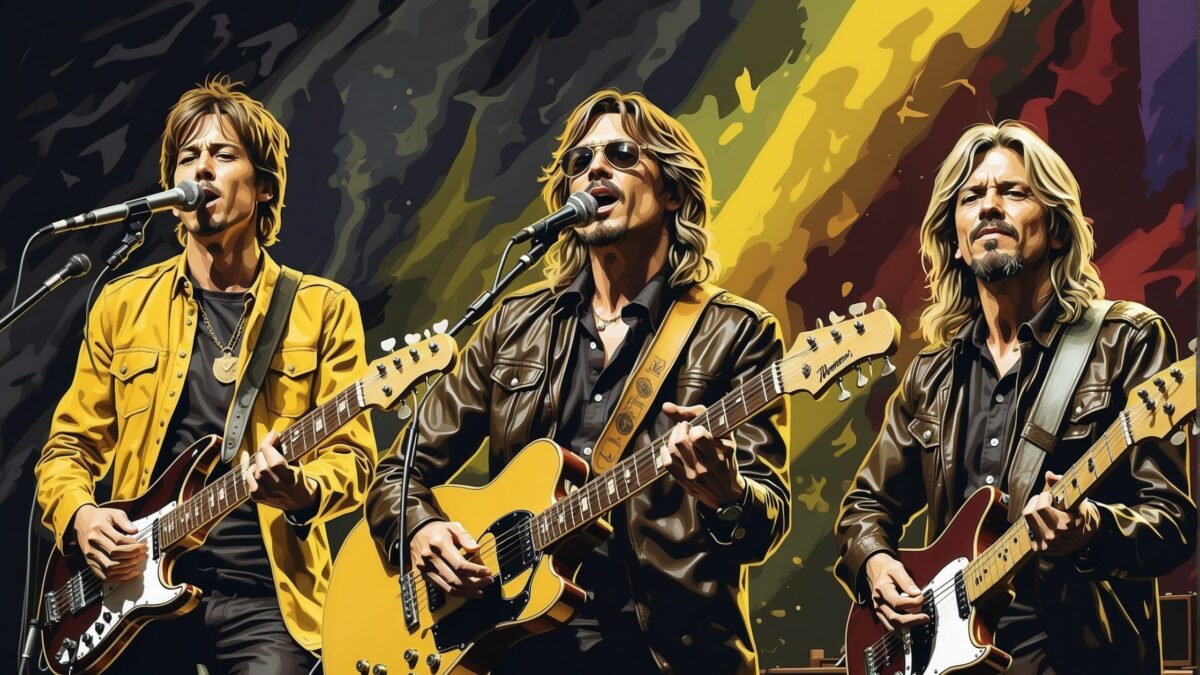
Sam Phillips (1923 – 2003). While record producer Sam Phillips was not a performer, his production work was instrumental in developing the sound of rock and roll. Before his work on “Rocket 88,” Phillips had already recorded influential blues performers like B.B. King and Howlin’ Wolf. By 1952, he had established a label, Sun Records, in Memphis and recorded some of the earliest sessions for rock and roll luminaries like Elvis Presley, Jerry Lee Lewis, Roy Orbison, and Carl Perkins, as well as country icon Johnny Cash, helping them all to establish their initial fame.
Chuck Berry (1926 – 2017). Missouri musician Chuck Berry was the first “guitar hero” in rock and roll history. With pianist Johnnie Johnson backing him on many of his songs, Berry popularized the guitar-centric rhythm of rock and roll, bravado showmanship, and trendy lyrical themes that appealed to teenagers. Berry’s biggest hits include “Maybellene” (1955), “Roll Over Beethoven” (1956), “Rock and Roll Music” (1957), “Sweet Little Sixteen” (1958), and his most popular anthem, “Johnny B. Goode” (1958). Berry’s music was particularly influential to later British bands, including the Beatles and the Rolling Stones. Berry was also one of the first rock and roll musicians to primarily write his own songs, making him one of the first rock and roll singer-songwriters.
Little Richard (1932 – 2020). When it came to showmanship, pianist Little Richard’s wild, flamboyant performances were second to none. Richard’s shouting vocal style was a significant influence on other performers, as was his flouting of traditional gender roles through his use of makeup and dress. Richard was one of the first African American artists to become popular with white audiences, and his biggest hits included “Tutti Frutti” (1955), “Long Tall Sally” (1956), “Lucille” (1957), and “Good Golly, Miss Molly” (1958). After briefly leaving rock and roll to perform gospel music, Richard would return to rock and roll in the early 1960s and hired a young Jimi Hendrix to perform in his band. Richard would boastfully refer to himself as “The Innovator, the Emancipator, the Originator, and the Architect of Rock and Roll.”
Elvis Presley (1935 – 1977). As early as 1956, the press was calling Elvis Presley the “King of Rock and Roll.”. Presley frequently seemed uncomfortable with the nickname and would point to other performers who he felt were more deserving of the title. But the title was well-deserved. After beginning his recording career with Memphis’ Sun Records in 1954, Presley became a cultural phenomenon after his recording contract was bought out by RCA, and he had a string of top-selling singles, including “Heartbreak Hotel,” “Don’t Be Cruel,” “Hound Dog,” “Love Me Tender,” “All Shook Up” and “Jailhouse Rock.”
By 1962, Presley had an unprecedented 17 #1 Billboard hit singles and had launched a successful career in films. After returning to music full-time in 1970, Presley mounted several hugely successful concert tours and experienced a resurgence in popularity.
Other important figures in rock and roll during the genre’s first decade include Buddy Holly, James Brown, Fats Domino, the Everly Brothers, Jerry Lee Lewis, and Eddie Cochran.
What Songs Made Rock and Roll Popular?
Two of the earliest chart successes for rock and roll can be claimed by Bill Haley & His Comets. Haley released the first rock and roll song to appear on the main Billboard chart, 1953’s “Crazy Man, Crazy,” which hit number 12. It also has the distinction of being the first rock and roll song to be heard on national television when it was played during the CBS television series Omnibus.
Haley’s 1954 song “Rock Around the Clock” was the first rock and roll song to reach number one on the Billboard chart after appearing in the controversial, rebellious youth film Blackboard Jungle. The song spent a then-record 38 weeks on the chart. It also reached number one on the UK and Australian charts. The Guinness Book of World Records estimates that “Rock Around the Clock” has sold 25 million copies worldwide.
By the end of the 1950s, dancing became a significant factor in rock and roll’s popularity with teenagers. Several rock and roll songs inspired popular but often short-lived “dance crazes.” The biggest example of a rock and roll dance is “The Twist,” which first became popular in 1960 after singer Chubby Checker released his version of Hank Ballard and the Midnighters’ 1958 song “The Twist.” The song hit number one on the Billboard chart twice, once in 1960 and again in 1962, and is the only song in history to hit number one on the charts two different times. Because of that feat, Billboard has named the song the biggest pop hit of all time.
Other major early rock and roll hits include:
- Chuck Berry – “Maybellene” (1955)
- Fats Domino – “Blueberry Hill” (1956)
- Little Richard – “Long Tall Sally” (1956)
- Elvis Presley – “Hound Dog” (1956)
- Elvis Presley – “Heartbreak Hotel” (1956)
- Elvis Presley – “Don’t Be Cruel” (1956)
- Buddy Holly and the Crickets – “That’ll Be the Day” (1957)
- Buddy Holly and the Crickets – “Peggy Sue” (1957)
- Elvis Presley – “Jailhouse Rock” (1957)
- Elvis Presley – “All Shook Up” (1957)
- The Everly Brothers – “Wake Up Little Susie” (1957)
- Jerry Lee Lewis – “Great Balls of Fire” (1957)
- Jerry Lee Lewis – “Whole Lotta Shakin’ Going On” (1957)
- Chuck Berry – “Sweet Little Sixteen” (1958)
- Chuck Berry – “Johnny B. Goode” (1958)
- The Everly Brothers – “All I Have to Do Is Dream” (1958)
- Ray Charles – “What’d I Say” (1959)
Why Did Rock and Roll Decline in Popularity?
After a period of explosive popularity in the mid-1950s, rock and roll faced a downturn in popularity in the United States by the early 1960s. Several major factors contributed to this brief decline, including:
- In 1958, Jerry Lee Lewis received significant negative media attention when it was revealed that he was married to his 13-year-old cousin (his “I thought she was 15” defense didn’t help matters)
- In 1958, Little Richard decided to pursue gospel music instead of rock and roll
- Popular rock and roll singer-songwriter Buddy Holly died in a February 1959 plane crash, which later became known as “The Day the Music Died”
- In 1959, influential disc jockey Alan Freed was fired for accepting payment from record labels to promote certain records (“payola”), leading to a Congressional investigation into the practice.
- Popular musician Eddie Cochran died in an April 1960 car accident
- Chuck Berry spent a year and a half in prison (1962 – 1963) for transporting an underage girl across state lines
- Elvis Presley became less of a controversial figure as he softened his image in his films and released soundtrack albums.
Though Presley, Chubby Checker, and other rock and roll artists continued to have hits, guitar-based rock and roll had already begun to shift into different genres. Rock and roll lost ground to the popularity of vocal-based music from doo-wop and Motown artists as well as “safer” rock music performed by teen idol figures like Bobby Vee, Bobby Rydell, and Fabian that, while commercially successful, lacked the raw, controversial sound of early rock and roll.
It wasn’t until the emergence of the Beatles, which ushered in the “British Invasion” of rock and roll bands from the United Kingdom that had been inspired by the 1950s rock and roll pioneers, that the surf and garage rock sounds from America that rock and roll returned to prominence as a cultural force and secured its place as the dominant music genre of the 20th century.
How did the sound of rock and roll change in the 1960s?
In the late 1950s and early 1960s, record producer Phil Spector revolutionized the sound of rock and roll record production with his “Wall of Sound” approach to recording. This method incorporated using orchestra-sized rock and roll bands made up of virtuoso studio musicians to create rich, dense-sounding records that could not have been achieved with the small number of people in the typical rock and roll band. In particular, Spector used this approach with vocal groups.
Some of the biggest hits produced by Spector include:
- The Teddy Bears – “To Know Him Is to Love Him” (1958)
- The Crystals – “He’s a Rebel” (1962)
- The Ronettes – “Be My Baby” (1963)
- The Righteous Brothers – “You’ve Lost That Lovin’ Feelin’” (1964)
- The Righteous Brothers – “Unchained Melody” (1965)
- Ike & Tina Turner – “River Deep – Mountain High” (1966)
Other producers adopted Spector’s approach and expanded on his techniques. Most important among them was Brian Wilson, founder and lead songwriter of the California band the Beach Boys. Though the Beach Boys were originally a surf rock band (known for verb-heavy electric guitar playing and vocal harmonies), by the mid-1960s, the band evolved as Wilson experimented with studio production. This culminated in the 1966 Beach Boys album Pet Sounds, which Wilson produced himself and included the hit songs “Wouldn’t It Be Nice,” “God Only Knows,” and “Sloop John B.” Wilson later pioneered psychedelic rock with The Beach Boys’ follow-up single, “Good Vibrations” (1966), which has been hailed by critics for its complex structure.
As artists like the Beatles, the Beach Boys, and Phil Spector were breaking new ground on what rock and roll records could sound like, various subgenres of rock and roll emerged in the mid to late 1960s. These include:
Blues rock. Following the lead of the Rolling Stones, British musicians who were influenced by the American blues music of Howlin’ Wolf and Muddy Waters fused the two genres together to create blues rock. Notable artists who began as blues rock musicians include Eric Clapton (who performed in the groups the Yardbirds and Cream), Fleetwood Mac, and Led Zeppelin. The heavy grooves of blues rock later would influence the creation of heavy metal music by groups like Black Sabbath, Deep Purple, and Judas Priest. In the Southern United States, blues rock later influenced musicians like the Allman Brothers Band, Lynyrd Skynyrd, and ZZ Top to create a sound that would later be dubbed Southern Rock.
Folk rock. In the United States, a revival of folk music in the early 1960s by artists like Pete Seeger, Bob Dylan, Odetta Holmes, and Joan Baez led to musicians incorporating folk music elements into rock and roll, primarily in Southern California. Notable folk rock artists include the Byrds, the Mamas & the Papas, Simon and Garfunkel, and Dylan himself, who controversially “went electric” in 1965 and alienated some of his folk audience.
Psychedelic rock. As a result of the counterculture of the 1960s and the increasing prominence of recreational drug use, psychedelic rock emerged as a “soundtrack” to the era with heavy distortion and innovative instrumentation. Notable psychedelic artists include the Jimi Hendrix Experience, the Grateful Dead, the Doors, and Jefferson Airplane.
Motown. Since rock and roll had been primarily invented by African-American artists, their contributions to the genre continued to thrive in the 1960s. The Detroit record label Motown spawned its own subgenre of rock and roll with its soulful, vocal-driven hits by artists like the Supremes, the Miracles, the Temptations, the Four Tops, and Marvin Gaye. Other artists who didn’t record for the Motown label but performed similar music included the “Queen of Soul” Aretha Franklin. The bass-heavy Motown sound and jazz elements later influenced the rise of funk music pioneered by early rock and roll star James Brown.
What was The British Invasion? What was Beatlemania?
American rock and roll music reached Western Europe in the late 1950s and particularly became popular in the United Kingdom. American rock and roll artists like Little Richard and Roy Orbison mounted successful tours in the United Kingdom, and young British musicians began performing American-style rock and roll music. Soon, bands like the Beatles and the Rolling Stones were having chart successes with not only covers of songs by early rock and roll stars but also their own original compositions. The Beatles had three #1 hits in the United Kingdom in 1963 (“From Me to You,” “She Loves You,” and “I Want to Hold Your Hand”), and the Rolling Stones had two #1 hits in the United Kingdom in 1964 (“The Last Time” and “Little Red Rooster”).
After amassing massive popularity in their home country in 1963, the Beatles traveled to the United States in February 1964 to unprecedented fanfare. In what became one of the defining moments in rock and roll history, the Beatles performed live on the popular American television series The Ed Sullivan Show, which was viewed by approximately 40 percent of Americans. The Beatles became a cultural phenomenon across Western society, bringing rock and roll music back to prominence in global culture. Other British bands to follow in the Transatlantic success of the Beatles and the Rolling Stones included the Kinks, the Who, the Hollies, the Zombies, the Animals, and the Dave Clark Five.
The popularity of the Beatles transcended music. In the summer of 1964, the Beatles starred in the comedy film A Hard Day’s Night, which became a box-office success. The Beatles became the first rock and roll band to perform in a sports stadium when they performed at Shea Stadium in New York City on August 15, 1965, before 55,000 fans.
Though the Beatles and the Rolling Stones began their careers writing guitar-driven songs in the vein of Chuck Berry and Buddy Holly, by the mid-1960s, they began experimenting with different instruments, sounds, and recording techniques. The Beatles’ 1967 album Sgt. Pepper’s Lonely Hearts Club Band drew from a variety of global musical influences and utilized revolutionary recording techniques. Sgt. Pepper’s Lonely Hearts Club Band became an incredibly influential album and is one of the best-selling albums of all time, selling over 30 million copies.
By the time the Beatles officially broke up in 1970, the group had become the best-selling music act of all time and had continued to influence thousands of musicians.
Why did 1960s rock and roll decline in popularity?
As with the initial decline in popularity of rock and roll in the late 1950s, rock and roll of the 1960s faced a similar decline in popularity after massively successful concerts like the 1967 Monterey International Pop Music Festival in California and the 1969 Woodstock Festival in New York. Several major factors contributed to this decline, including:
- The controversy over the disastrous Altamont Speedway Free Festival in 1969, headlined by the Rolling Stones, attracted media attention because of its violence (including four deaths, one by stabbing).
- The deaths of several major music figures between 1969 and 1971, including Brian Jones (the Rolling Stones), Jimi Hendrix, Janis Joplin, Jim Morrison (the Doors), and Duane Allman (the Allman Brothers Band).
- The breakup of the Beatles in 1970. Though the four members pursued successful solo careers, their individual recordings did not match the global popularity of the Beatles’ music.
How did rock and roll change in the 1970s?
While radio continued to be the dominant way that rock and roll fans listened to music, the rapid increase in FM radio stations in the United States during the 1970s led to a growth in the number of radio stations that played rock and roll music, many going beyond playing the Top 40 selections of AM pop stations.
Contributing to the major changes in the rock and roll landscape of the 1970s was the further splintering of rock and roll into subgenres. Several styles developed out of the already-established subgenres of the 1960s, while others were brand-new innovations of the decade. These styles include:
Hard rock and heavy metal. After evolving from blues rock in the late 1960s, the heavier sounds of hard rock and heavy metal became significant draws throughout the 1970s. UK bands like Deep Purple, Led Zeppelin, Black Sabbath, Judas Priest, and Queen were soon followed by American hard rock artists like Alice Cooper, Blue Öyster Cult, KISS, Aerosmith, and Van Halen. Hard rock and heavy metal bands also emerged from other countries, such as Australia’s AC/DC. Several of these bands would achieve significant mainstream popularity and would headline large-scale global concert tours.
Progressive rock. Continuing from the groundbreaking sounds of psychedelic rock, progressive rock artists to expand the sonic boundaries of rock and roll by performing it in a way that is more like jazz or classical music. Unlike earlier decades, for some progressive rock groups, there was much less emphasis on the constraints of recording music to have hit singles on the pop charts. Progressive rock bands ran a gamut of completely innovative artists like Frank Zappa (both with his band the Mothers of Invention and solo recordings) and Genesis to more pop-oriented bands like Yes, Boston, Electric Light Orchestra, Journey, and Kansas.
Country rock. In 1968, the Byrds released the album Sweetheart of the Rodeo featuring new band member Gram Parsons. The album, which was recorded in Nashville, combined rock music of the Byrds with country music in the tradition of early rock and roll musicians who had straddled the line between the two genres. While controversial at first, country rock soon became a popular subgenre with subsequent artists like Poco, the Flying Burrito Brothers, Eagles, Linda Ronstadt, and Pure Prairie League. Though Eagles would evolve into a band with more of an arena rock sound, the band would become one of the top-selling rock and roll groups in music history.
Singer-songwriter and soft rock. Somewhat in the tradition of folk rock, several solo singer-songwriter musicians achieved significant chart success with generally softer, more commercially middle-of-the-road music. Major artists include Elton John, Cat Stevens, Carly Simon, Billy Joel, Carole King, and James Taylor. Also, several major artists of other genres from previous decades, including Elvis Presley, the Beatles’ Paul McCartney, Paul Simon (previously of Simon & Garfunkel), Rod Stewart (previously of the Faces), Eric Clapton, and Fleetwood Mac, had major hits after releasing soft rock singles.
Glam rock. Primarily a style that was predominant in the UK, glam rock drew on a curious mix of 1950s rock and roll music, prog rock, and science fiction to create a unique blend of rock and roll that was supported by outrageous visuals. In addition to glam rock’s bombastic sound, the subgenre emphasized the appearance of the performers, which included androgynous fashion styles. Top glam rock artists include David Bowie, T. Rex, Slade, and Roxy Music.
Punk rock. By the middle of the 1970s, there was a reactive movement to the studio mastery of progressive rock and the softness of singer-songwriter music that resulted in punk rock, a throwback style to early 1950s rock and roll and do-it-yourself garage rock of the 1960s. Playing music in an aggressive tempo with lyrics that were either anti-establishment or anti-mainstream society, punk rock bands from both the United States and the UK, like the Ramones, Television, the Sex Pistols, the Clash, the Damned, and Blondie, became popular with underground audiences and influenced future generations of rock and roll musicians.
Several artists who defied genre labels, like Bob Seger and the Silver Bullet Band, Bruce Springsteen and the E Street Band, and John Cougar Mellencamp, whose sound was influenced by 1960s rock and roll, also became successful during the 1970s and 1980s.
Rock and Roll versus Disco
While dancing had been a significant part of the growth in popularity of rock and roll music in the 1950s and early 1960s, fans of the more recent styles of rock and roll were generally not attending concerts to dance. Influenced by beat-heavy funk and soul music, disco music became a widely popular form of dance music in the 1970s that appealed to youth culture.
Disco became a staple of nightclubs that were increasingly able to perform recorded music by improving sound system technology instead of hiring live music performers. Popular rock and roll artists like Rod Stewart and David Bowie would even incorporate elements of disco into their music, and even stalwart rock and roll bands like the Rolling Stones would release disco-influenced songs.
Though disco music shared origins with rock and roll and Motown would later record disco music with many artists in its stable, by the end of the 1970s, a “disco sucks” movement began in the United States amongst rock and roll fans against the genre. Nonetheless, elements of disco music will continue to influence rock and roll music in the coming decades.
How did MTV change rock and roll music in the 1980s?

In perhaps the biggest impact rock and roll music had made on American television since the Beatles first appeared on The Ed Sullivan Show in 1964, MTV (short for “Music Television”) launched on August 1, 1981. The concept behind MTV was to be a televised radio station that devoted most of its airtime to playing music videos.
MTV launched with several limitations in the United States – it was in a limited number of TV markets and only had a library of about 250 music videos, many of them by British artists that were not popular in the United States. But the results were extraordinary. Record stores in markets where MTV aired reported a vast increase in record sales for artists whose videos were in heavy rotation on the channel. Since many of them were from the UK, some dubbed their success as the “Second” British Invasion. Record labels quickly learned that a popular video on MTV could lead to a significant increase in national record sales.
Artists who achieved significant success through appearances on MTV include:
Tom Petty and the Heartbreakers. After seeing several of the band’s old performance promo videos used on MTV, rock and roll musician Tom Petty conceived of using the music video for his band’s 1982 single “You Got Lucky” as a “mini-movie” depicting the Heartbreakers in a post-apocalyptic wasteland. It was the first music video to incorporate a short introduction before the song started. Petty later released some acclaimed, often humorous music videos, including “Don’t Come Around Here No More” (1985), “Jammin’ Me” (1987), “Runnin’ Down a Dream” (1989), “Free Fallin’” (1989), “Learning to Fly” (1991), and “Into the Great Wide Open” (1991).
Duran Duran. British new wave rock band Duran Duran was one of the many UK artists to achieve significant success in the United States because of MTV. The band’s adventurous music video for their 1982 song “Hungry Like the Wolf” was shot in Sri Lanka and was one of the most expensive ever made at the time, but the investment paid off. The popularity of the video resulted in Duran Duran’s first major hit in the United States, where they were previously virtually unknown, and the band became one of the most successful music groups of the 1980s.
Michael Jackson. Controversially, MTV initially played very few music videos by African-American artists. It was not until former Motown Jackson 5 performer Michael Jackson created many innovative music videos, starting with 1983’s “Billie Jean,” that the channel began featuring more videos by African-American musicians. Jackson’s music videos were known for their extraordinary production values and groundbreaking dance moves, including “Beat It” (1983), “Thriller” (1983), “Bad” (1987) “Smooth Criminal” (1988), and “Black or White” (1991). Because of their popularity, many of Jackson’s music videos were extended short films that went beyond the length of the original song.
ZZ Top. Texas blues rock trio ZZ Top had moderate national success since releasing their debut album in 1971. But the band experienced an explosion of new attention with their eighth album, 1983’s Eliminator, which updated their sound with synthesizers. The three musicians in ZZ Top – two of whom had chest-length beards – didn’t look like pop idols, so they filled their music videos with attractive women, hot rods, and humor. ZZ Top became one of the most unlikely stars of MTV with these clever videos.
Madonna. After performing in several unsuccessful bands in the late 1970s music scene in New York City, Madonna’s pop-rock solo music was accompanied by many music videos that featured her dancing, including “Like a Virgin” (1984), “Material Girl” (1985), “Open Your Heart” (1986), “Papa Don’t Preach” (1986), and “Like a Prayer” (1989). Her acclaimed videos broke new ground for female artists on MTV.
By the end of the 1980s, rock and roll bands were focusing significant attention on breaking on MTV. Some critics believed that record labels were signing artists for photogenic reasons as opposed to actual talent. This controversy was highlighted by the quick rise and fall of the R&B duo Milli Vanilli. After becoming a star on MTV and winning the Grammy Award for Best New Artist in 1990, Milli Vanilli was exposed as a fraud – the two members of the group were models and dancers who did not sing a note on either of their released albums. To some, MTV was allowing musicians (or, in this case, non-musicians) to coast to success on attractiveness rather than musical talent.
How Did Rock and Roll Music Change in The 1990s?
By the early 1990s, bands from the Pacific Northwest that were influenced by punk music and heavy metal, including Nirvana, Pearl Jam, Soundgarden, and Alice In Chains, grew in popularity. The style, later dubbed grunge rock, became the dominant subgenre of rock and roll in the 1990s. MTV was still a major factor in the success of grunge groups (Nirvana’s music video for their 1991 song “Smells Like Teen Spirit” was played often on the channel), which helped the subgenre explode in popularity.
However, the popularity of grunge bands was short-lived. Nirvana frontman Kurt Cobain committed suicide on April 8, 1994. Over the next few years, other major bands, such as Pearl Jam, Alice In Chains, and Stone Temple Pilots, faced a variety of business and addiction issues that prevented them from maintaining the level of success they had achieved earlier in the 1990s.
Also, by the end of the 1990s, MTV had shifted its target demographic and had significantly scaled back its music-related program. The remaining shows, like Total Request Live, were primarily focused on teen pop music rather than rock and roll. Other significant factors in the decline in popularity of rock and roll music in the United States around this time included increasing corporate ownership of radio stations and digital file privacy, which significantly affected record sales.
Rock and roll has continued to endure as a popular genre in the 21st century, primarily based on the contributions of legacy rock and roll artists from earlier decades who still tour and record. Still, some newer rock bands have achieved global success in recent years and maintain the genre’s popularity today.
Conclusion
The history of rock and roll is a tapestry rich with innovation, cultural shifts, and musical evolution. From its roots in rhythm and blues to its explosion into mainstream culture, rock and roll has consistently pushed the boundaries of what music can represent. The genre has not only provided a soundtrack for generations but also mirrored societal changes and championed the spirit of rebellion and freedom. As we reflect on the legacy of rock and roll, it’s clear that its rhythms will continue to resonate, influencing artists and audiences for years to come.
